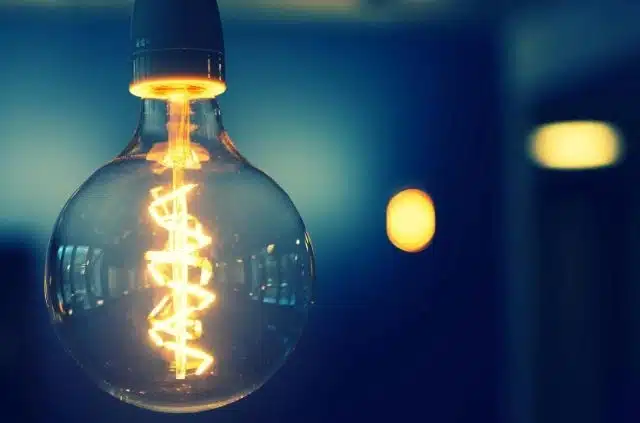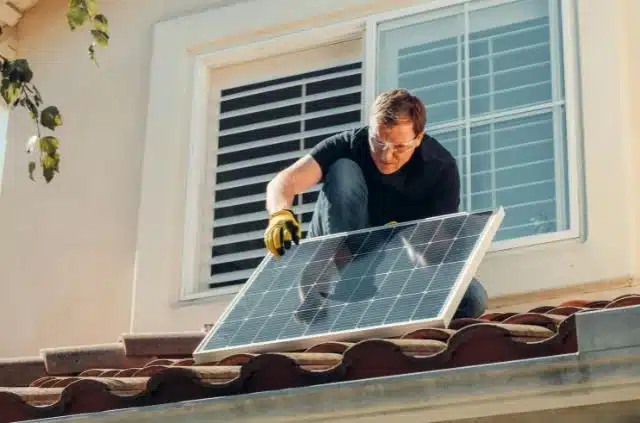To keep your home cool and energy-efficient this summer, optimizing your air conditioning unit is a great place to begin. A properly cared-for central air-conditioning unit will have a lifespan of 12 to 17 years, states Bob Vila. Maintenance of the kind that includes cleaning or replacing air filters and checking cooling coils can extend its longevity and make it run more efficiently.
The programmable thermostat guarantees that the temperature is maintained effectively by regulating the indoor climate according to your schedule, making it convenient to operate your air conditioner. Not only does it keep your house warm, but it also stops energy wastage, lowering electricity bills, especially during the peak time when electricity prices may be high. Running these settings efficiently is an economical decision because it reduces unnecessary energy consumption by a huge amount.
Ceiling fans are a cost-effective substitute for air conditioning units, increasing air movement in your house. Since they use less energy, operating ceiling fans allows you to raise the thermostat a few degrees without loss of comfort, saving even more on cooling bills. Implementing fans together with an automatic air conditioning system offers you a synergistic advantage, experiencing maximum cooling effect while remaining budget-friendly.
Increasing Insulation in Your House
The right insulation is what your home needs to cool your house, actually preventing the heat from penetrating your home during the warm summer. Insulation material comes in different R-values, which are the ratings of their heat flow resistance, and choosing the right one can make a gigantic difference for your home’s temperature control ability as well as your energy-saving capability. Sealing leaks, adding weatherstripping, and inspecting attic insulation are low-cost ways that insulate your house against the scorching sun.
Reflective window films are also a means of providing supplemental insulation by minimizing solar heat gain through windows. They accomplish this by obstructing a portion of the rays, cooling homes, and reducing their reliance on overuse of air conditioning. Indoor temperatures and electricity usage can be minimized by homeowners to a significant extent if combined with energy-efficient blinds or curtains.
Monthly checks of the most likely zones of energy loss, i.e., windows, doors, and ducts, can prevent unnecessary temperature fluctuations in your house. Closing gaps and caulking tiny crevices are simple measures that go a long way towards saving energy, supplementing your already devised insulation schemes. With the addition of these minor upgrades, homeowners can create a warm and energy-efficient living space with little monthly expenditure.
Smart Water Heater Management
Water heaters use a great deal of energy in the home, and smart money is saved by having them operate at their most efficient temperature. CNET says that the perfect water heater temperature setting is 120 degrees Fahrenheit, as it is the ideal balance between energy efficiency and safety considerations. Having your water heater set to this range saves wastage of energy and reduces scalding risk.
Insulating your water heater and pipes reduces thermal loss, especially with older systems. Reduced heat loss translates into a more efficient operation of systems, typically with operating savings. It is an easy upgrade that is a reasonable step to manage household energy use without an initial high cost.
Using a solar water heater is an environmentally sound alternative that also cuts hot water’s reliance on electricity. While installation can be expensive, long-term savings typically pay for it since free, renewable energy from the sun is employed. All these green alternatives are not only gentle to the earth, but they are budget-friendly as well in cutting back utility expenses for conscientious homeowners.
Lighting and Electrical Efficiency
Replacing energy-efficient light sources, e.g., LED bulbs, is a simple but powerful means of optimizing the energy efficiency of your home. LEDs consume much less power than regular incandescent bulbs, with further savings on your bills in the long run. Moreover, their longer lifespan results in fewer and less expensive replacements, optimizing economic efficiency as well.
Functioning with intelligent electrical appliances like these devices and movement sensors makes energy control at home automated. The appliances prevent unnecessary lights and appliance use. Intelligent systems can be adjusted to get familiar with your pattern, naturally regulating energy expenses.
According to IBISWorld, 237,911 electricians were working in the US as of 2023 and provided appropriate professional solution services in the event of complicated electrical adjustments. Having your home’s electrical system checked and upgraded by an electrician will mean a lot of power efficiency and protection. By making such smart decisions, homeowners can bring their settings up to date and make them energy-efficient.
Practical Outdoor Adjustments
Landscaping is equally critical in your home’s cooling operation by blocking and reducing direct sunlight exposure. Landscaping trees strategically or putting up awnings can insulate windows and rooftops from sunlight, naturally cooling your indoor environment. Besides saving energy, these installations contribute to the beauty and natural appreciation of the home’s worth.
Lighter roof and wall paints reflect, but not absorb, sunlight, creating a radiation barrier from the sun. Reflecting also reduces the transfer of heat into the house, thus keeping the indoor climate cool. These are preemptive actions to cut down one’s reliance on air-conditioning appliances, particularly during the warm summer months.
Having solar panels is a double contribution, providing shade and clean home energy. Although it is an initial investment, solar power can reap large rewards by reducing the utility bill while maintaining the green revolution. Such kinds of creative outdoor solutions make for a sustainable and financially prudent home.



